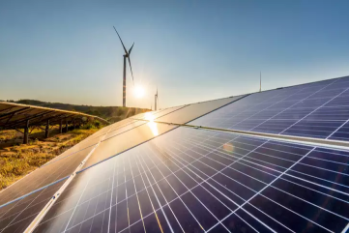Mumbai: Centre’s solar modules manufacturing production linked incentive scheme will benefit incremental panels demand till FY30 said India Ratings and Research (Ind-Ra).
According to the ratings agency’s estimates, the allocation of Rs 45 billion towards modules manufacturing by the Ministry of New and Renewable Energy (MNRE) can benefit the sales of 20GW from the capacity developed under the PLI scheme.
“It also means sanction of the PLI facility which will benefit 4-6GW of sales annually over five years from commissioning of the beneficiary manufacturing facilities,” the agency said in a report.
“The scheme can facilitate additional 8-12GW annual solar cell or module manufacturing capacity in India. Sales up to 50 per cent of the manufacturing capacity set up by the winning bidder will benefit from PLI. This estimate assumes the base PLI rate of Rs 2.25 per watt power and entirely greenfield expansion.”
Besides, the report said the capacity to benefit under the scheme may further reduce from the stated 20GW level in case of the plants achieve better module efficiency and temperature coefficient than the minimum requirement defined in the notification.
“India has set a target to install 280GW of solar power plants by FY30 out of which about 240GW is under pipeline or yet to be implemented, which means just 8-13 per cent of this planned requirement is going to benefit directly from this PLI scheme till FY30, apart from improving the domestic manufacturing capacity.”
Furthermore, the report cited that on the execution side, winning bidders may lose on the committed timelines in case they slip on the commissioning timelines of 1.5-3 years from the date of PLI sanction.
As per the agency, bidding players may choose to restrict the level of backward integration, given the stringent timelines.
Moreover, the PLI benefit will be available till five years from the scheduled date of commissioning only, meaning that winning bidders will be at risk of losing benefit of the scheme, if they overcommit on the level of integration.”Backward integration may take some time, given the already established procurement contracts and supply chains internationally. Also, in case a selected manufacturer fails to meet the promised integration or capacity or minimum module performance after his selection, he will not get any PLI till he overcomes these deficiencies, and/or performance guarantees can also be liquidated by India Renewable Energy Development Agency in the meantime.”
“If the manufacturer achieves the promised levels subsequently, he will be eligible for PLI from the next month after which the performance measures are met.”
Solar PLI scheme to benefit incremental demand till FY30: Ind-Ra
Furthermore, the report cited that on the execution side, winning bidders may lose on the committed timelines in case they slip on the commissioning timelines of 1.5-3 years from the date of PLI sanction
Source:Energyworld






